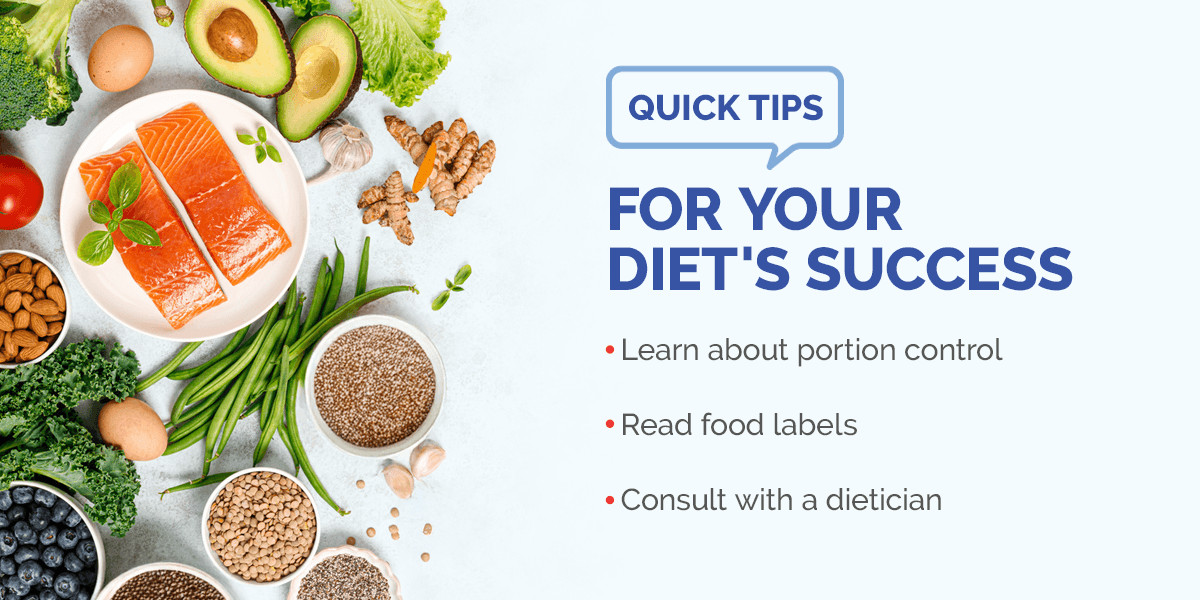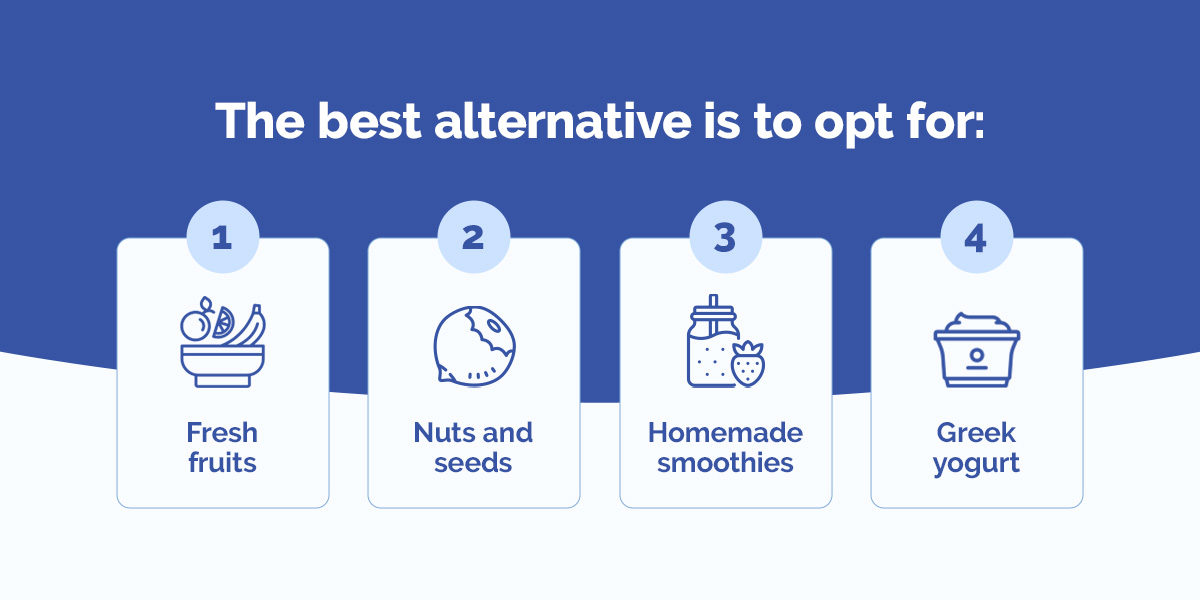As we grow older, our nutritional needs change. This makes being mindful of what we consume so important. From processed meats to sugary drinks, trans fats and more, the influence of diet on the body and well-being is significant.
Below, we explore what to avoid or limit and offer tips on creating a healthy, balanced diet for the older adult in your care. Discover problems and solutions in dietary choices for older individuals.
5 Types of Foods Older Adults Should Avoid
As a family caregiver or adult child looking after a parent, one of your most important roles is to make the right food and dietary choices for your loved one. The following are everyday foods that many overlook but can be detrimental to your loved one’s health. Put them on your “foods to avoid” list, especially if the person is prediabetic.
1. High-Sodium Foods
The U.S. Food & Drug Administration (FDA) aims to reduce the amount of sugars and sodium in our diets. Sodium comes from salt, which is about 40% sodium.
Many healthy foods like fruits, vegetables, whole grains and nuts contain sodium. So, the problem isn’t consuming sodium but rather consuming too much of it. Studies have shown that adults need to consume less than 2,300 milligrams of sodium per day — this is equal to around 1 tablespoon of salt. However, the average American eats about 3,400 milligrams of sodium per day.
In older adults, eating too much sodium can lead to:
- Elevated blood pressure, which is a risk factor for stroke, kidney problems and heart disease.
- Swelling in hands, feet, face and ankles.
- Weight gain.
- Increased risk of cardiovascular problems.
If you’re a family caregiver or an adult looking after your older parent, here are a few foods to limit or avoid in your loved one’s diet:
- Canned goods
- Processed meats, such as bacon or sausages
- Salty snacks, such as pretzels or chips
2. Processed Meat
Processed meat comes with several dietary risks and health conditions, such as:
- Cancer risk: Processed meats such as bacon, burgers, cold cuts and sausages contain many additives and preservatives that can be linked to an increased risk of cancer in older adults.
- Heart disease concerns: High consumption of processed meats increases saturated fats and sodium in the body, which contributes to cardiovascular problems like heart disease and hypertension.
- Inflammatory challenges: Processed meats can trigger inflammation in the body.
Processed meats are very popular in the country. Bacon, burgers, cold cuts and sausages are just a few examples of everyday meats we consume. If you’re taking care of an older adult, you can avoid or limit these by looking for healthy protein alternatives, such as:
- Fish and seafood
- Poultry and lean meats
- Plant-based proteins
3. Soft Drinks, Sugary Beverages and Artificial Sweeteners
Soft drinks and artificial sweeteners tend to be high in sugar. The main challenge with consuming too many sugary drinks is its effect on:
- Blood sugar control: Sugary beverages such as sodas and fruit drinks spike blood sugar levels, which can increase the risk of diabetes and metabolic disorders.
- Bone health: A high intake of sugary drinks has been linked to decreased bone density and increased risk of osteoporosis in older adults.
The best alternatives are healthier drinks such as:
- Water
- Herbal teas
- Calcium-rich beverages, like milk or plant-based milk
4. Saturated Fats and Trans Fats
Saturated fats are fats that are solid at room temperature, and they’re found in foods such as butter and cheese. Eating too much of these fats can raise cholesterol levels and increase the risk of heart disease.
Trans fats, on the other hand, are fats created through a process called hydrogenation, and they are often found in baked goods and fried foods. Too much trans fats in an older person’s diet can also increase cholesterol levels and heart disease risk.
Not all fats are bad, though. The role of fats in the body includes helping with energy, insulation (keeping the body warm) and assisting in brain function. This is why it’s essential not to cut out fat completely but to avoid or limit “bad” fats.
The best way to avoid trans fats from everyday foods is to:
- Read food labels: Check food labels for ingredients such as “partially hydrogenated oils” or “hydrogenated fats.”
- Choose healthier fats: Foods like olive oil, nuts and avocados contain healthier fats that are safe to consume.
- Reconsider your cooking and food preparation: Avoid deep-frying and pan-frying foods and rather opt for healthier cooking methods like steaming, baking or grilling.
5. Excessive Sugar and Refined Carbohydrates
Too much sugar and refined carbohydrates in an older adult’s diet — or anyone’s diet, really — isn’t healthy. By “excessive sugar” and “refined carbohydrates,” we mean foods like:
- Sweetened breakfast cereals
- Pastries like cakes, doughnuts or cookies
- Candy
Your Prediabetes Diet Food List — What to Eat Instead
As we age, we also become more likely to develop health concerns like diabetes and high cholesterol. In many cases, this starts as a diagnosis of prediabetes — your blood sugar and metabolism may not work as well as they used to, but you’re still not in the range for full-fledged diabetes. If this is the case for you, it’s even more important to reconsider your diet and start making changes before it develops into larger health problems.
Your Go-To Foods
According to the Centers for Disease Control (CDC), one of the best ways to manage good nutrition is through the use of a meal plan. That doesn’t mean you have to eat the same foods every day, though. In fact, a good meal plan offers diverse eating options that align with your tastes and good nutritional content. One of the most popular ways to do this is by following the plate method.
The plate method starts with a simple, nine-inch dinner plate — the perfect size for a well-proportioned and filling meal. That plate should be divided into three categories and accompanied by water or a low-calorie drink:
- Half of your plate should consist of low-starch vegetables.
- A quarter of your plate should have lean protein.
- A quarter of your plate should contain complex carbohydrates.
Let’s examine this list of foods for prediabetes closely.
1. Low-Starch Vegetables
Non-starchy vegetables are low in carbohydrates and high in other nutrients your body craves, like fiber and vitamins. Add some color to your plate with a mixture of vegetables like:
- Spinach
- Broccoli
- Brussels sprouts
- Tomatoes
- Mushrooms
- Kale and other lettuces
2. Lean Proteins
Lean proteins maximize the nutrients you receive while minimizing fat content. Look for protein sources with less than 10% fat, like:
- Chicken
- Fish
- Legumes and beans
- Tofu
3. Whole Grains
Whole grains take longer for your metabolism to break down, leading to a more stable blood sugar level. When you have your choice in carbs, opt for options such as:
- Whole-wheat breads and pastas
- Brown or wild rice
- Oats
- Quinoa
- Barley

Quick Tips for Your Diet’s Success
When changing your diet, just like many things in life, moderation is key. Going on a healthy “diet” is unlikely to last if you feel like you can’t have any of the foods you want. Still, if you’re unsure of how to start this new lifestyle:
- Learn about portion control: If you’ve heard the phrase “your eyes are larger than your stomach,” you know that portion control can be a challenge. Learn the difference between portion sizes and serving sizes to help determine how much of each food group you should eat at meals.
- Read food labels: Food labels are full of critical information about the nutrition you’re consuming. Read them carefully to see if they align with your needs, and search for alternatives where necessary so you can continue having your favorite foods in a healthier way.
- Consult with a dietician: Nutrition experts can help you create personalized meal plans that cater to your unique tastes and health needs. They can be an important part of your support network, especially if your condition progresses into diabetes or a similar illness.

The problem with these foods is that they can spike blood sugar levels, insulin and inflammation in the body. The best alternative is to opt for:
- Fresh fruits
- Nuts and seeds
- Homemade smoothies
- Greek yogurt
FAQs on Older Adult Nutrition
If you’re taking care of a loved one, you may have questions about their diet. Below are frequently asked questions and answers that might help shed light on this topic.
1. What Are Some Healthy Snack Options for Older Adults With a Sweet Tooth?
There are many healthy options to satisfy a sweet tooth without relying on sugary snacks. You can try offering fresh fruit like berries or sliced apples with cinnamon. A few squares of dark chocolate can also be a satisfying treat. In addition, a smoothie with fruit, yogurt and a touch of honey can make the perfect healthy snack. The key is to focus on natural sweetness and avoid added or artificial sugars.
2. How Can I Help My Loved One Get Enough Protein Without Relying on Processed Meat?
Fish and seafood are great protein choices. Poultry, like chicken or turkey, and lean cuts of beef or pork also contain a lot of protein. You can also go the plant-based route by incorporating beans, tofu, quinoa or lentils into your loved one’s diet.
3. What Are Some Tips for Making Healthy Food Choices When Eating Out at Restaurants?
Making healthy food choices when eating out doesn’t have to be a complicated process. For example, you could choose grilled, baked or steamed options instead of fried foods. You could encourage your loved one to order a side salad or vegetables instead of fries. In addition, asking for sauces and dressings on the side allows you to control how much they’re consuming.
Take Control of Your Loved One’s Health Journey
If you’re concerned about your loved one’s health, don’t hesitate to seek professional medical advice. At Village Caregiving, we have a dedicated team on a mission to help older adults live dignified, fulfilling and joyful lives. We create specialized home care plans that include cooking and eating assistance, which has customized health-conscious meal plans designed with your loved ones’ health and well-being in mind.
To learn more about how we can support you and provide the best care for your loved one, contact us today or find a Village Caregiving location near you.



Recent Comments